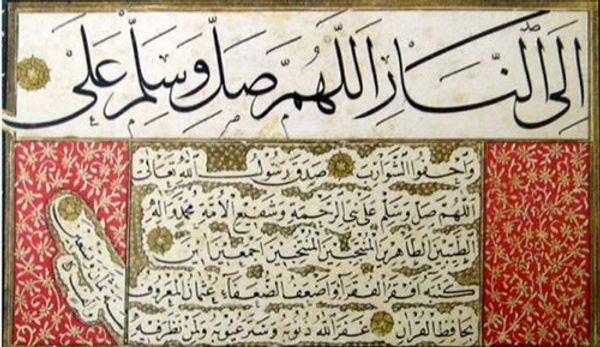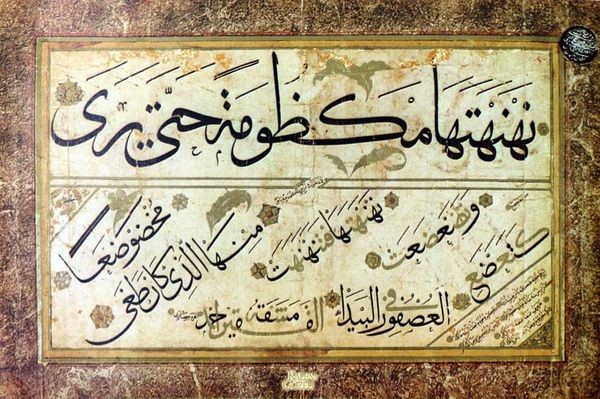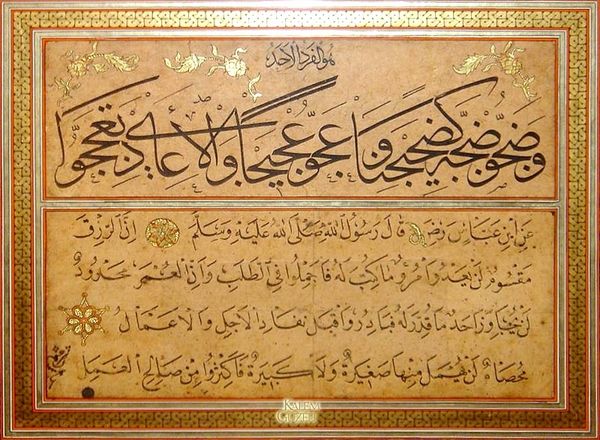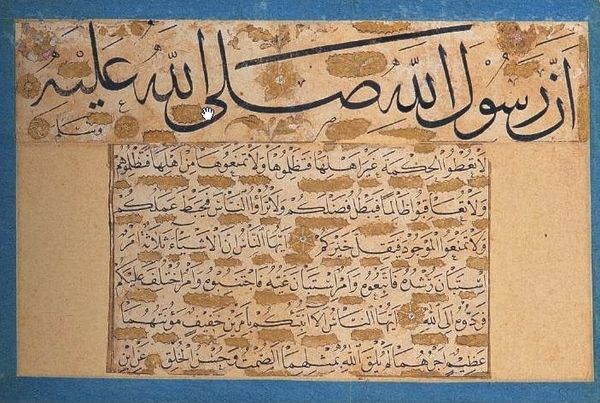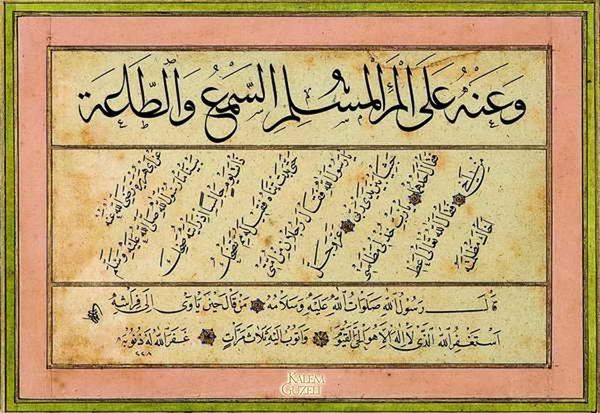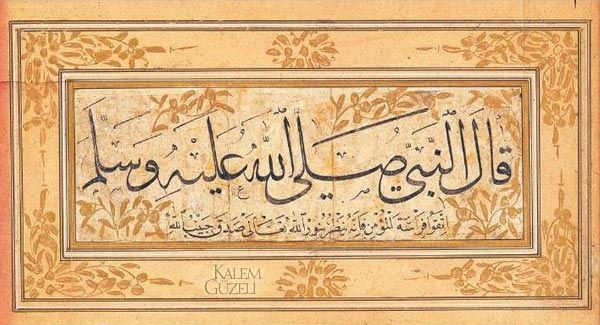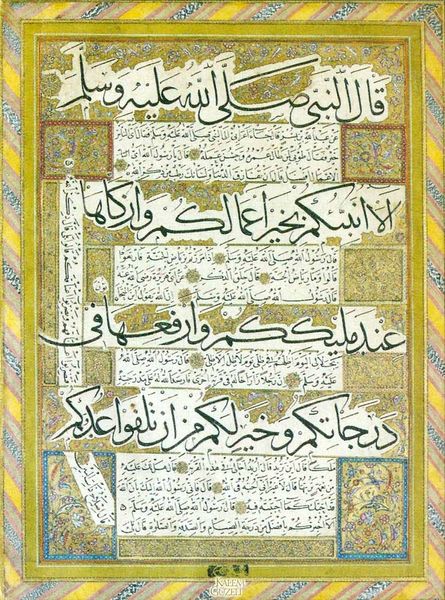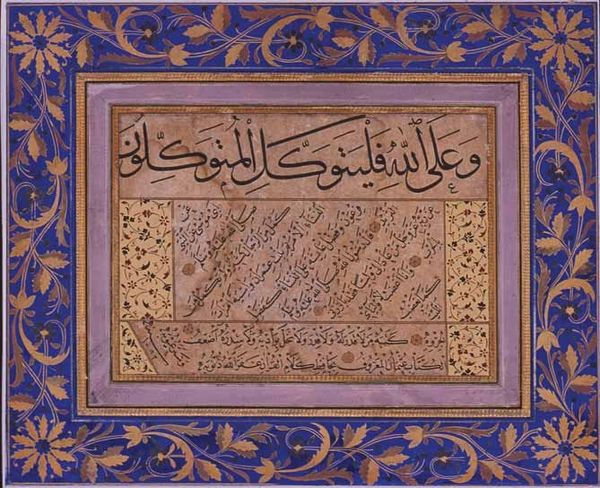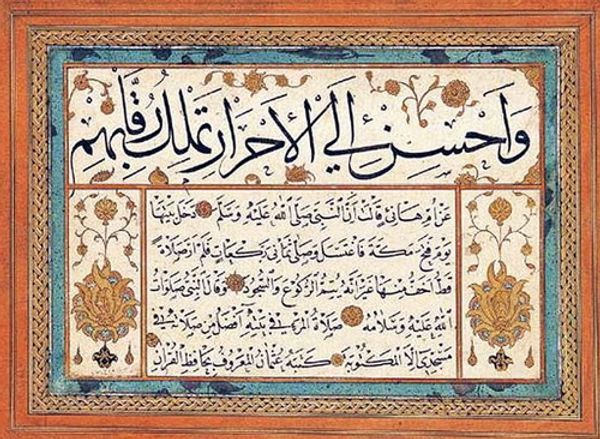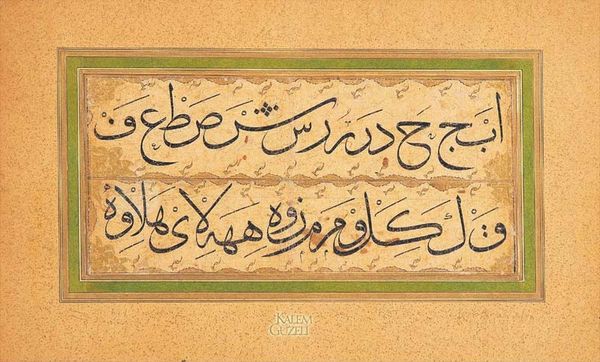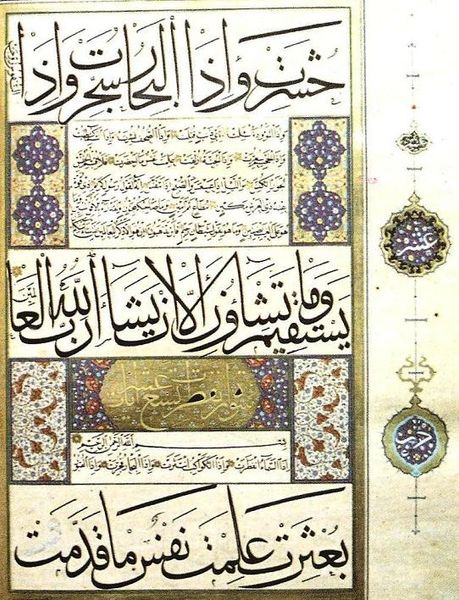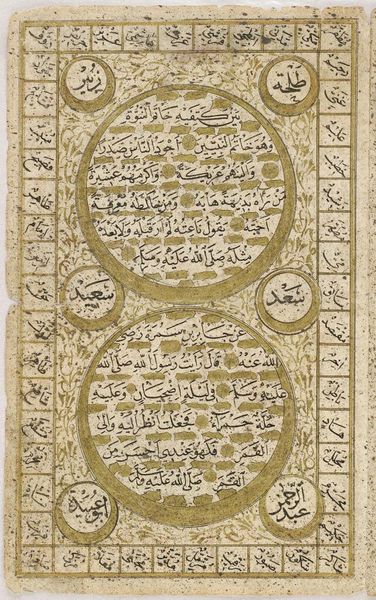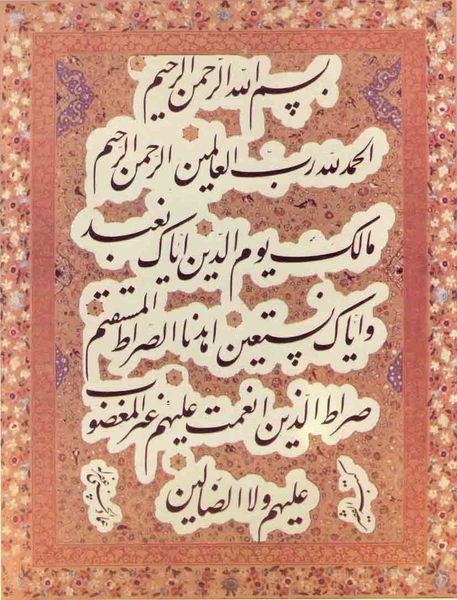
drawing, paper, ink
#
pattern out of typography
#
drawing
#
hand-lettering
#
wave pattern
#
hand lettering
#
paper
#
ink
#
organic pattern
#
calligraphic
#
wooden texture
#
line
#
pattern repetition
#
islamic-art
#
decorative-art
#
layered pattern
#
funky pattern
#
calligraphy
Copyright: Public domain
Editor: So, this is an untitled ink drawing on paper, probably more accurately called a calligraphic work, by Hafiz Osman. The patterns created by the lines of text give it a striking visual rhythm. I’m really curious how to understand its cultural background. What do you see in this piece? Curator: What strikes me immediately is the incredible fusion of the aesthetic and the spiritual. Calligraphy, especially in Islamic traditions, isn't just writing; it's a profound art form intertwined with religious expression. Consider the historical context: writing and artistic practice as ways to both express and reinforce cultural and religious identity. How might the geometric precision of the script relate to larger societal structures and values? Editor: That makes me think about the artist as an artisan too – less ‘individual genius’ and more someone working within, and giving shape to, a whole set of beliefs. Curator: Exactly. Think about the power dynamics inherent in producing such an artwork. The artist is both a transmitter and interpreter of religious knowledge, and there's a delicate negotiation happening between tradition, personal skill, and devotional intention. We can also explore gendered aspects – who typically had access to education and the means to produce such works? This unveils complex narratives about knowledge, access, and power. Do you find the patterns to evoke a particular mood? Editor: Yes, they feel contemplative, even meditative. Like you could get lost in them. But now I’m thinking that maybe they are about something more than just pure aesthetics. Curator: Precisely. The beauty here isn't separate from the message; it's integral. By understanding the piece in its social and historical setting, we gain a deeper respect for both its artistic value and its cultural significance. I hope it is helping you situate the artwork within broader intersectional narratives. Editor: Absolutely, this reframes everything. It’s not just about what’s beautiful to look at, but how that beauty communicates, reinforces, and maybe even challenges ideas. Curator: Yes, and art like this is a potent form of cultural and spiritual affirmation. Keep questioning, keep contextualizing, and you'll discover ever more fascinating dimensions of art history!
Comments
No comments
Be the first to comment and join the conversation on the ultimate creative platform.
